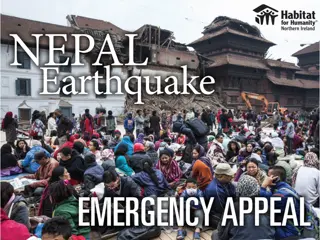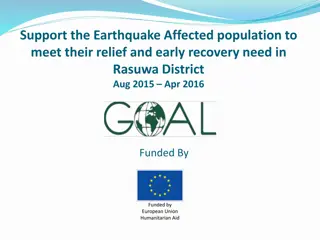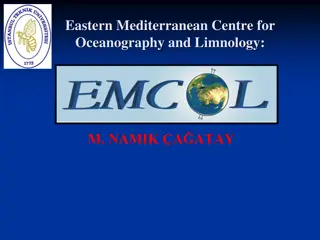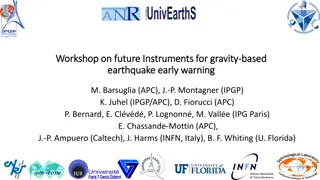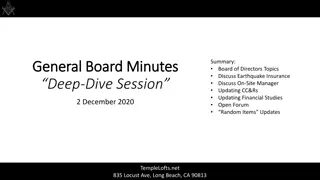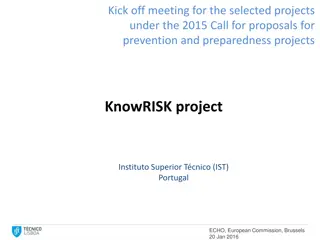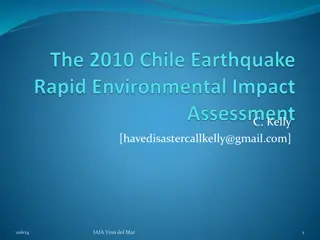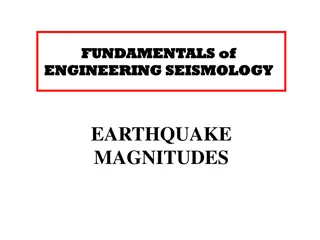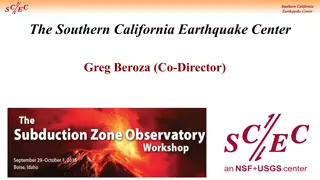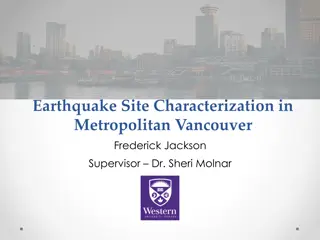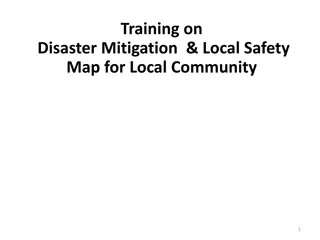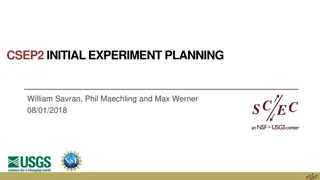
Aftershock Trend Analysis after 2011 Tohoku Earthquake
Explore the trend analysis of aftershocks following the 2011 Tohoku Earthquake, the most powerful earthquake to ever hit Japan. Data obtained from the Japan Meteorological Agency reveals a significant decrease in aftershock numbers over time, with regression analysis showing interesting patterns in earthquake frequency. The conclusion highlights the ongoing nature of aftershocks post-disaster.
Download Presentation

Please find below an Image/Link to download the presentation.
The content on the website is provided AS IS for your information and personal use only. It may not be sold, licensed, or shared on other websites without obtaining consent from the author. If you encounter any issues during the download, it is possible that the publisher has removed the file from their server.
You are allowed to download the files provided on this website for personal or commercial use, subject to the condition that they are used lawfully. All files are the property of their respective owners.
The content on the website is provided AS IS for your information and personal use only. It may not be sold, licensed, or shared on other websites without obtaining consent from the author.
E N D
Presentation Transcript
Trend Analysis of Aftershocks after 2011 Tohoku Earthquake EAS 4480 ZHONGDUO ZHANG 4/20/2017
Background Date: 11 March 2011 Magnitude: 9.0 9.1 (Mw) Most powerful earthquake ever hit Japan 70km off coast 29km deep Caused by rupture of upper plate subducted by the Pacific Plate with a length of 500 km Lingering aftershocks
Range of Aftershocks Shown in the red box Includes earthquakes occurred on the plate boundaries, as well as other earthquakes proximate to the main shock of 3.11 Earthquake
Data for Analysis Obtained from Japan Meteorological Agency (JMA) Aftershock information currently available from March 2011 to March 2016 (5 years) Only includes earthquakes with magnitude greater than 4.0
Overall Trend 7211 aftershocks in total Significant decrease in number within first year after main shock For the analysis, only use data beginning from one year after the main shock (13th month)
Regression Analysis 4-Year Period (4/2012 3/2016) Average earthquakes per month: 39 LS Slope: -1.1794/month CI: [-4.711, 2.3519] Bootstrap Slope: -1.1654/month CI: [-1.1489, -1.1818]
Regression Analysis The slope of decrease in the last 12 months of the sampling period is about one half of that for entire 4-year period Last 12 Months (4/2015 3/2016) Average earthquakes per month: 21 Bootstrap Slope: -0.5132/month CI: [-0.4877, -0.5387] LS Slope: -0.5490/month CI: [-3.5208, 2.1529]
Frequency Analysis Lomb-Scargle Method No significant frequency found
Conclusion The number of aftershocks tapers off as time elapses However, as the time elapses, the decrease rate of aftershocks becomes slower The aftershocks may still last for years No periodicity implication for the aftershocks
Source Japan Meteorological Agency (2016). Aftershock Activity of 2011 Tohoku Pacific Coast Earthquake. [http://www.jma.go.jp/jma/index.html] Earth Observatory of Singapore (2011). The great East Japan (Tohoku) 2011 earthquake: Important lessons from old dirt. [http://www.earthobservatory.sg/news/great-east-japan- tohoku-2011-earthquake-important-lessons-old-dirt]

